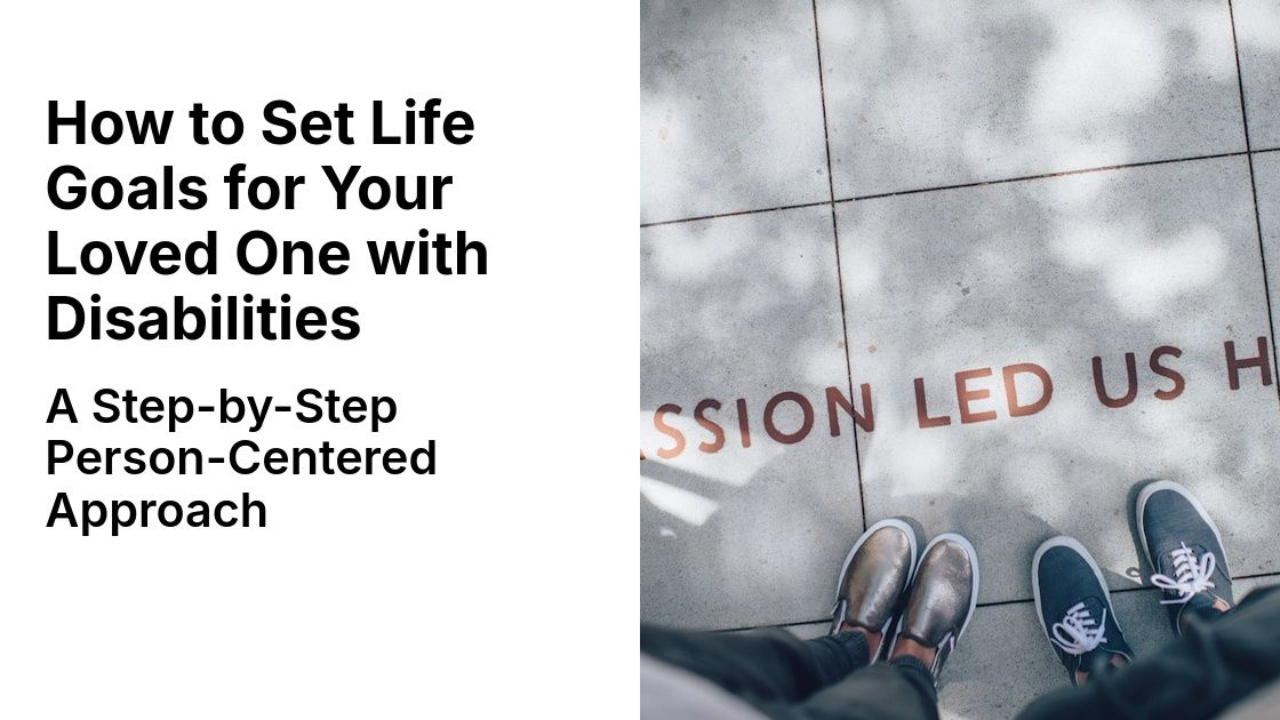How to Set Life Goals for Your Loved One with Disabilities: A Step-by-Step Person-Centered Approach

When you love someone with a developmental disability, you naturally want the best for them—a safe, joyful, and meaningful life. But knowing how to support your loved one in setting life goals that reflect their dreams (not just what the system offers) can feel overwhelming.
That’s where Person-Centered Planning comes in.
It’s not about filling in a checklist. It’s about discovering what really matters to your loved one—and building a plan to make that vision a reality.
Here’s a step-by-step guide to help you create meaningful, individualized life goals that empower your loved one to live with purpose, dignity, and choice.
Step 1: Start with Listening—Not Assumptions
Every person has hopes, preferences, and things that bring them joy. The first step is to listen deeply—whether your loved one communicates with words, gestures, technology, or behavior.
Ask:
-
What makes them light up?
-
What do they want more of in life?
-
What do they avoid or seem unhappy about?
-
Who do they enjoy being around?
-
What are they proud of?
Use open-ended questions or even visual supports to spark ideas, like , "what does living independently look like to you?" All communication is valid—you just have to tune in.
Step 2: Explore Key Life Areas
To build a well-rounded picture of what matters, explore different parts of life. Some helpful domains include:
-
Home & Daily Living
Where would they like to live? What kind of routines or support do they need? -
Work & Meaningful Activities
Do they want a job, a volunteer role, or creative projects? What are their interests? -
Friendships & Relationships
Who are their people? Do they want more social time, dating, or community involvement? -
Learning & Growth
Are there skills they want to learn? Hobbies to try? Topics that spark curiosity? -
Health & Wellness
What helps them feel calm, strong, or energized? Are there health goals to work toward? -
Dreams for the Future
If they could do anything, what would it be?
Step 3: Write Goals in Their Voice
Once you’ve gathered ideas, begin shaping them into goals that reflect the person’s voice. Instead of saying:
“We want him to work on communication,”
try:
“I want to be able to tell people what I need.”
Instead of:
“She needs to increase independence,”
try:
“I want to learn how to ride the bus by myself.”
Use “I” statements whenever possible—even if you’re writing on their behalf. It centers their perspective.
Step 4: Break Big Dreams into Achievable Steps
Big life goals can feel overwhelming. Break them down into small, clear steps. For example:
🎯 Goal: I want to get a job at a pet store.
Steps:
-
Visit local pet stores and talk to staff
-
Practice animal care skills at home or in a class
-
Create a resume with help from my team
-
Apply to a volunteer or job training program
Celebrate progress along the way—each step is movement toward the bigger picture.
Step 5: Build the Right Support Around Each Goal
Now ask: What supports will help make these goals possible?
This might include:
-
Family and friends
-
Regional Center services (like supported employment, ILS, or day programs)
-
School or transition programs
-
Community groups, mentors, or cultural connections
-
Technology or communication tools
In the IPP (Individual Program Plan) or IEP make sure the goals are written clearly, and ask for supports to match.
Step 6: Review and Revise—This Is a Living Plan
Life goals change—just like people do. Review the plan regularly (at least once a year) and invite your loved one to reflect on what’s working and what’s not.
Ask:
-
What new interests are showing up?
-
What’s no longer important?
-
Are there new opportunities to explore?
Keep the plan flexible, and keep the person in charge.
Setting life goals for a loved one with a disability isn’t about fixing them—it’s about honoring who they are and supporting who they want to become.
Need support creating or updating a person-centered life plan?
Let’s work together. You can book a free consultation to walk through the process, review goals, or get tools to support your next planning meeting.
Because everyone deserves a life built around their own dreams—not someone else’s checklist.
Book a Free Advocacy & Planning Call
If you’re curious about how we can help your loved one, let’s talk! In this free 30-minute call, we’ll:
💬 Talk about your loved one’s passions and strengths
💬 Explore possible ideas
💬 Identify first steps to turning a dream into reality

